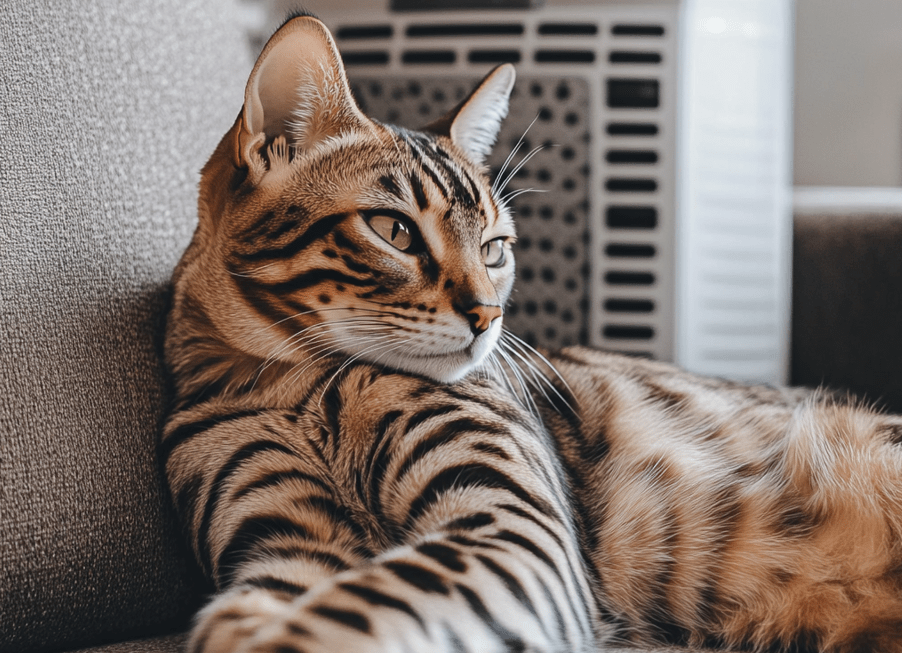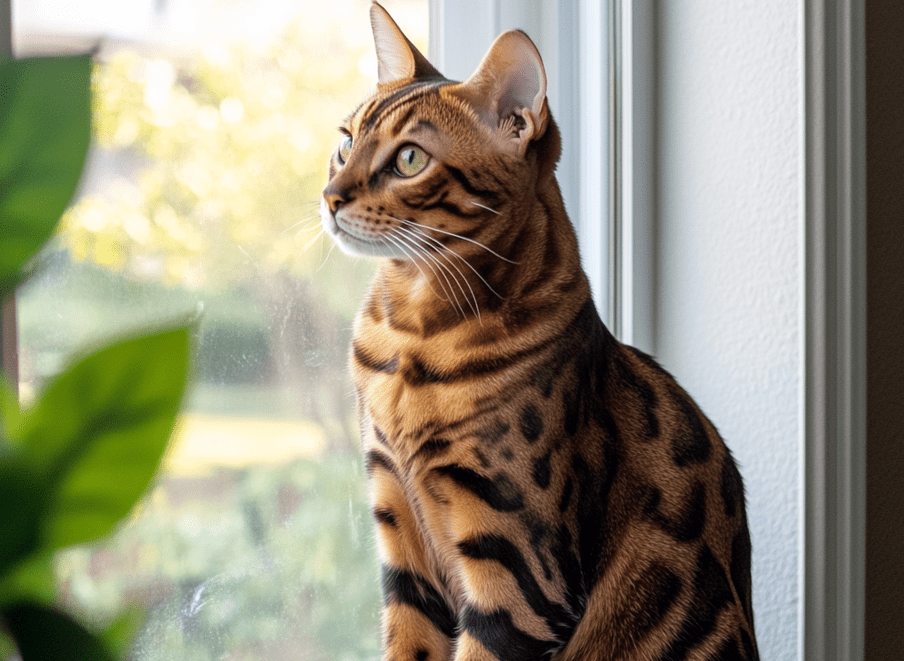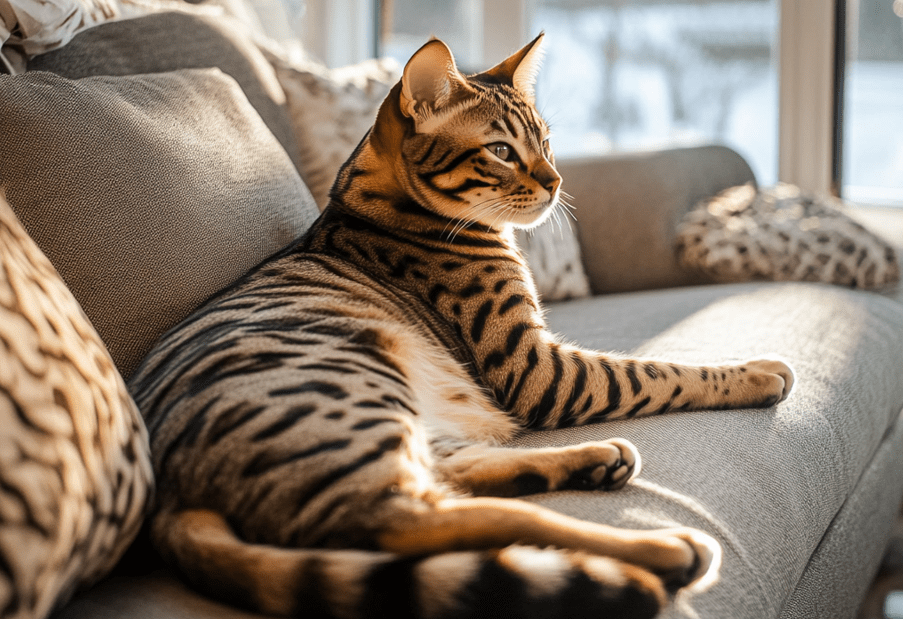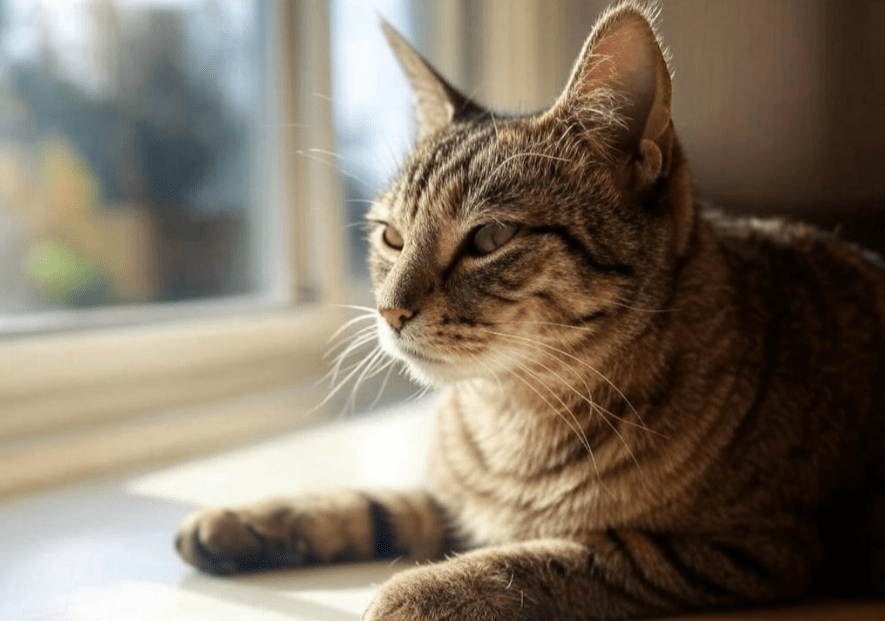
Owning a Bengal cat is a rewarding experience, thanks to their stunning appearance, playful nature, and energetic personality. However, as a Bengal cat owner, one of your top responsibilities is ensuring their health and well-being. Among the many challenges you might face, protecting your Bengal cat from common parasites like fleas and ticks is crucial. These tiny pests can cause significant discomfort and even lead to serious health issues if left unchecked. In this comprehensive guide, we’ll explore effective strategies to safeguard your Bengal from fleas and ticks, keeping them happy and healthy.
Understanding Fleas and Ticks: Why They’re a Threat to Your Bengal Cat
Fleas and ticks are more than just a nuisance for your Bengal cat—they can pose serious health risks. Fleas are small, wingless insects that feed on your cat’s blood, causing itching, irritation, and potentially leading to allergic reactions like flea allergy dermatitis. Ticks, on the other hand, are arachnids that latch onto your cat’s skin, feeding on their blood and potentially transmitting diseases such as Lyme disease or ehrlichiosis.
Bengal cats, with their active and adventurous nature, are particularly prone to encountering these parasites, especially if they spend time outdoors or in environments where fleas and ticks thrive. Understanding the dangers of these parasites is the first step to protecting your feline companion.
The Life Cycle of Fleas and Ticks
To effectively protect your Bengal from fleas and ticks, it’s helpful to understand their life cycles:
Fleas: The flea life cycle includes four stages—egg, larva, pupa, and adult. Adult fleas lay eggs on your cat, which then fall into the environment (like your home or yard). These eggs hatch into larvae, which eventually develop into pupae and then adult fleas. This cycle can take as little as two weeks, making infestations grow rapidly if not addressed.
Ticks: Ticks also have four life stages—egg, larva, nymph, and adult. They require a blood meal at each stage to progress, often latching onto hosts like your Bengal cat. Ticks are most active in warm, humid climates and can survive for months without feeding, making them a persistent threat.
Signs Your Bengal Cat May Have Fleas or Ticks
Detecting fleas or ticks on your Bengal cat early can prevent more severe problems. Here are some common signs to watch for:
Excessive Scratching or Biting: If your Bengal is constantly scratching, licking, or biting their skin, it could be a sign of flea bites or tick irritation.

Red or Irritated Skin: Flea bites often cause redness, inflammation, or small bumps, especially around the neck, back, or tail base.
Visible Parasites: Fleas are tiny and fast-moving, but you might spot them in your cat’s fur. Ticks are larger and often feel like small bumps when you run your hands over your cat’s skin.
Flea Dirt: Flea dirt looks like small black specks (flea feces) in your cat’s fur. If you place these specks on a wet paper towel and they turn reddish-brown, it’s a sign of fleas.
Lethargy or Fever: In severe cases, ticks can transmit diseases that cause lethargy, fever, or loss of appetite in your Bengal.
If you notice any of these signs, take action immediately to protect your Bengal cat from further discomfort or health risks.
Step-by-Step Guide to Protect Your Bengal from Fleas and Ticks
Protecting your Bengal cat from fleas and ticks requires a multi-faceted approach that combines prevention, treatment, and environmental management. Here’s a detailed guide to help you keep these parasites at bay:
1. Use Veterinarian-Recommended Flea and Tick Preventatives
One of the most effective ways to protect your Bengal cat from fleas and ticks is by using preventative treatments. These products are designed to kill parasites on contact or prevent infestations before they start. Some popular options include:
Topical Treatments: These are applied to the back of your Bengal’s neck and provide month-long protection against fleas and ticks. Brands like Frontline or Advantage are commonly recommended by veterinarians.
Oral Medications: Flea and tick pills, such as Bravecto or NexGard, are given monthly or every few months and work systemically to kill parasites.
Flea Collars: Collars like Seresto offer long-lasting protection (up to 8 months) by releasing active ingredients that repel and kill fleas and ticks.
Always consult your veterinarian before choosing a product to ensure it’s safe for your Bengal cat, especially if they have sensitivities or underlying health conditions.
2. Regular Grooming and Inspection
Bengals are known for their sleek, spotted coats, which can sometimes hide fleas or ticks. Regular grooming not only keeps their coat healthy but also allows you to check for parasites. Here’s how to groom and inspect your Bengal:
Brush Their Coat: Use a fine-toothed flea comb to brush your Bengal’s fur, focusing on areas like the neck, back, and base of the tail where fleas often hide.
Check for Ticks: Run your hands over your cat’s body to feel for small bumps, especially around the ears, neck, and between the toes—common tick hiding spots.
Bathe When Necessary: While Bengals generally don’t require frequent baths, a flea shampoo recommended by your vet can help remove fleas if you notice an infestation.
Grooming sessions are also a great bonding opportunity with your Bengal, making it a win-win for both of you.
3. Maintain a Clean Environment
Fleas and ticks don’t just live on your Bengal—they can infest your home and yard, creating a cycle of re-infestation. Keeping your environment clean is essential for long-term protection.
Vacuum Regularly: Vacuum your home daily if you suspect a flea infestation, paying special attention to carpets, rugs, and furniture where flea eggs and larvae may hide. Dispose of the vacuum bag immediately to prevent fleas from escaping.
Wash Bedding: Wash your Bengal’s bedding, blankets, and any fabric they frequently use in hot water to kill fleas and their eggs.
Treat Your Yard: If your Bengal spends time outdoors, treat your yard with pet-safe insecticides or natural deterrents like diatomaceous earth to reduce the tick population.
4. Limit Outdoor Exposure During Peak Seasons
Fleas and ticks are most active during warm, humid months, typically spring through fall. If your Bengal cat loves exploring the outdoors, take extra precautions during these seasons:
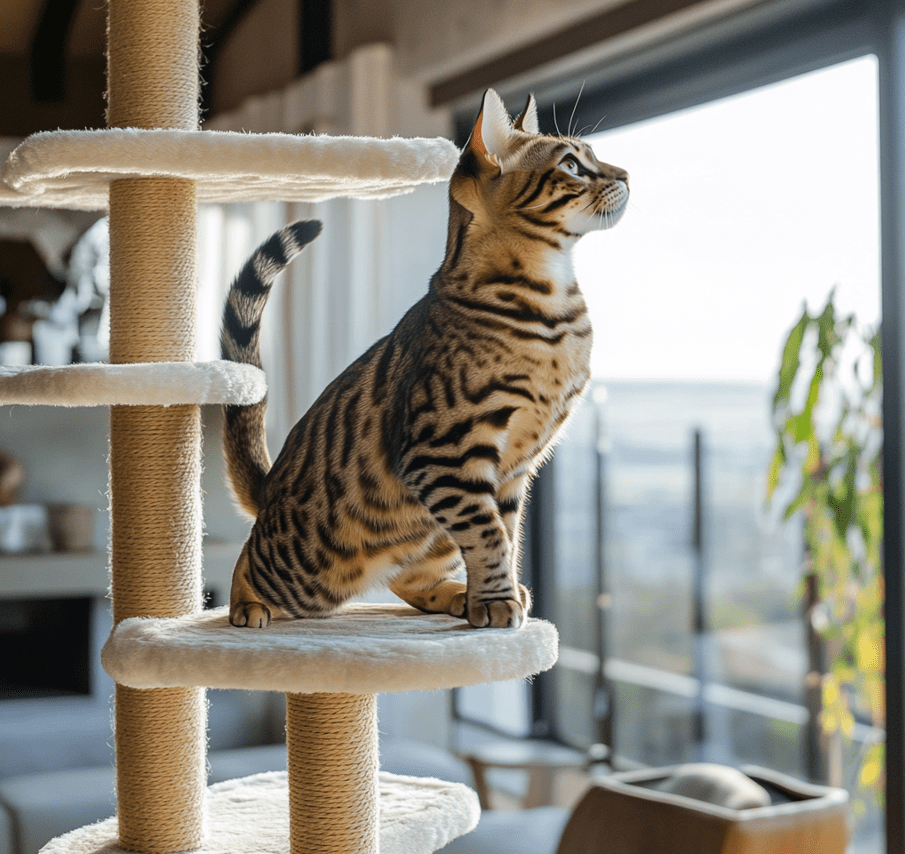
Supervised Outdoor Time: Allow your Bengal to play outside in a controlled environment, such as a catio (cat patio) or a fenced yard, to minimize their exposure to parasites.
Avoid High-Risk Areas: Keep your Bengal away from tall grass, wooded areas, or places where ticks are likely to thrive.
Check After Outdoor Play: Always inspect your Bengal for ticks or fleas after they’ve been outside, even if it’s just for a short time.
5. Consider Natural Flea and Tick Repellents
If you prefer a more natural approach, there are several pet-safe options to help protect your Bengal from fleas and ticks:
Essential Oils (With Caution): Certain essential oils, like cedarwood or lemongrass, can repel fleas and ticks. However, cats are sensitive to many essential oils, so always dilute them properly and consult your vet before use.
Diatomaceous Earth: Food-grade diatomaceous earth can be sprinkled on your Bengal’s bedding or in your home to kill fleas by dehydrating them. Ensure it’s safe for pets and avoid inhalation.
Herbal Sprays: Look for vet-approved herbal sprays that use natural ingredients like neem oil to repel parasites.
While natural remedies can be effective, they’re often best used in combination with other preventative measures for maximum protection.
6. Monitor and Treat Infestations Promptly
If your Bengal cat does get fleas or ticks, quick action is key to preventing a full-blown infestation or health complications.
Removing Ticks: Use fine-tipped tweezers to grasp the tick as close to your cat’s skin as possible and pull it out slowly and steadily. Clean the area with rubbing alcohol and monitor for signs of infection.
Treating Flea Infestations: If you spot fleas, use a vet-recommended flea treatment immediately. You may also need to treat your home and yard to break the flea life cycle.
Veterinary Care: If your Bengal shows signs of illness (e.g., fever, lethargy, or loss of appetite) after a tick bite, visit your vet immediately to test for tick-borne diseases.

Additional Tips for Bengal Cat Owners
Bengals are unique cats with specific needs, so here are a few extra tips to keep them safe from fleas and ticks:
Keep Their Immune System Strong: A healthy Bengal is better equipped to handle minor flea or tick bites. Feed them a balanced, high-quality diet and ensure they get regular exercise to boost their immunity.
Avoid Over-the-Counter Products Without Guidance: Some over-the-counter flea and tick treatments can be toxic to cats, especially Bengals, who may be more sensitive. Always choose vet-recommended products.
Stay Consistent with Preventatives: Skipping doses of flea and tick preventatives can leave your Bengal vulnerable. Set reminders to administer treatments on schedule.
Common Myths About Fleas and Ticks in Cats
There are several misconceptions about fleas and ticks that can lead to inadequate protection for your Bengal cat. Let’s debunk a few:
Myth 1: Indoor Cats Don’t Get Fleas or Ticks
Even indoor Bengals can get fleas or ticks if you bring them into the house on your clothes, shoes, or other pets. Consistent prevention is necessary regardless of whether your cat goes outside.
Myth 2: Fleas and Ticks Only Affect Cats in Summer
While fleas and ticks are more active in warm months, they can survive year-round in many climates, especially indoors. Year-round protection is essential.
Myth 3: A Single Treatment Will Eliminate Fleas Forever
Flea treatments kill adult fleas, but eggs and larvae in the environment can lead to re-infestation. A comprehensive approach, including environmental management, is necessary.
When to Consult a Veterinarian
While many flea and tick issues can be managed at home, there are times when professional help is needed:
-
If your Bengal has a severe flea allergy reaction, such as excessive hair loss or skin infections.
-
If you suspect a tick-borne illness (symptoms include fever, joint pain, or lethargy).
-
If you’re unsure about the safety of a flea or tick product for your Bengal.
Your veterinarian can provide tailored advice and recommend the best course of action for your cat’s specific needs.
Conclusion: Keeping Your Bengal Cat Safe and Healthy
Protecting your Bengal cat from fleas and ticks is an essential part of being a responsible pet owner. By using vet-recommended preventatives, maintaining a clean environment, and monitoring your cat for signs of parasites, you can ensure your Bengal stays healthy and happy. Regular grooming, limited outdoor exposure during peak seasons, and prompt treatment of infestations are all key steps in keeping these pests at bay.
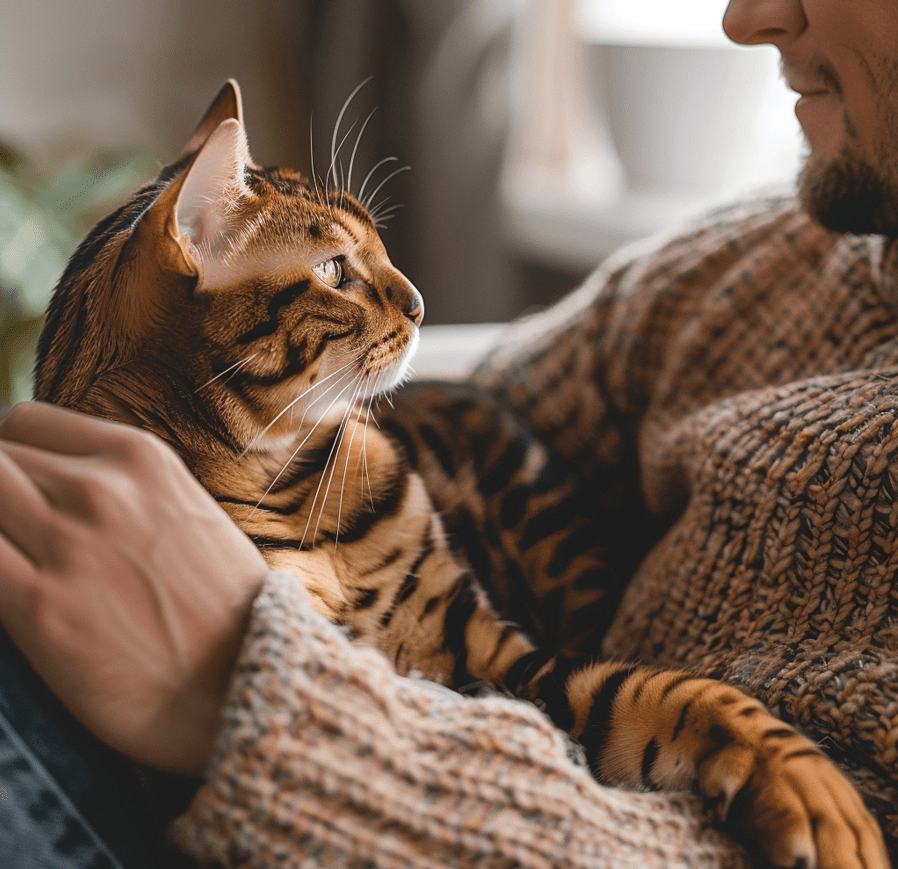
With their energetic and curious nature, Bengal cats bring so much joy to our lives—it’s our job to protect them from threats like fleas and ticks so they can thrive. By following the strategies outlined in this guide, you’ll be well-equipped to safeguard your feline friend from these common parasites.


